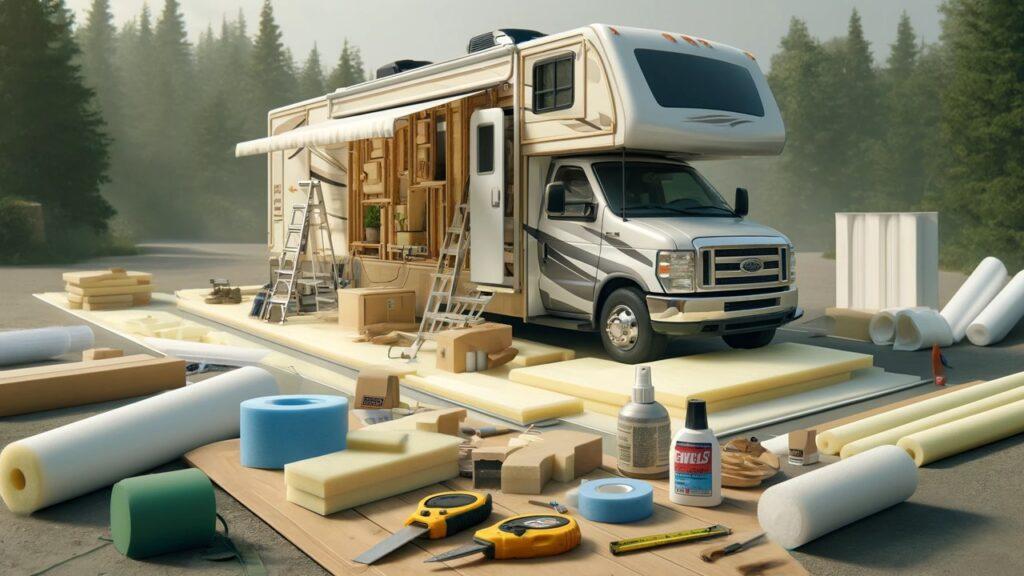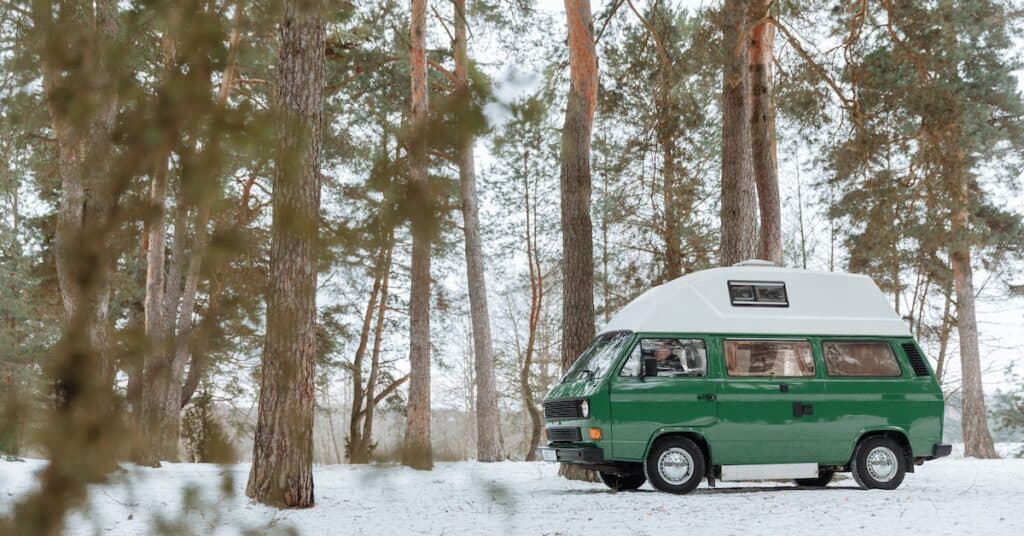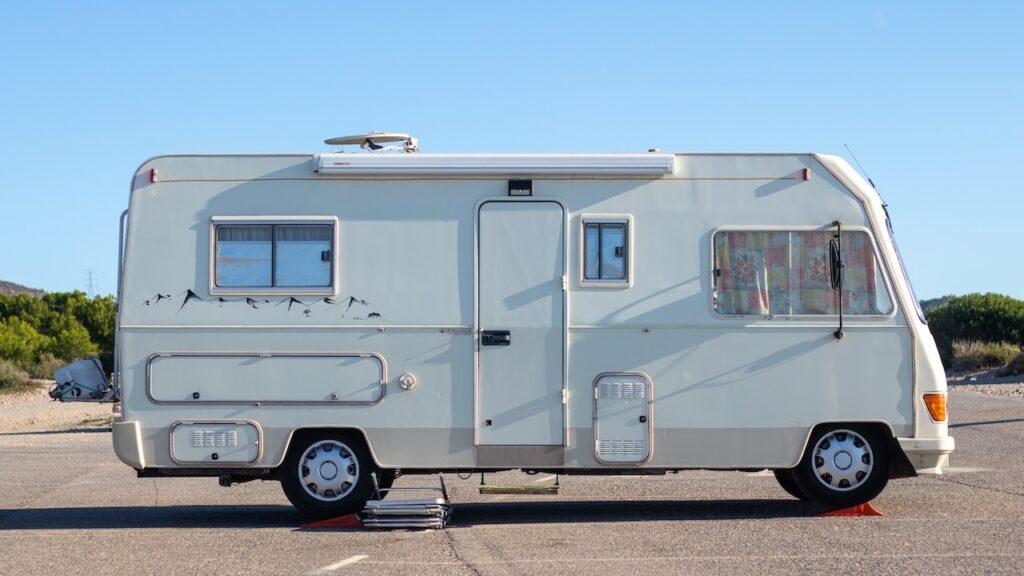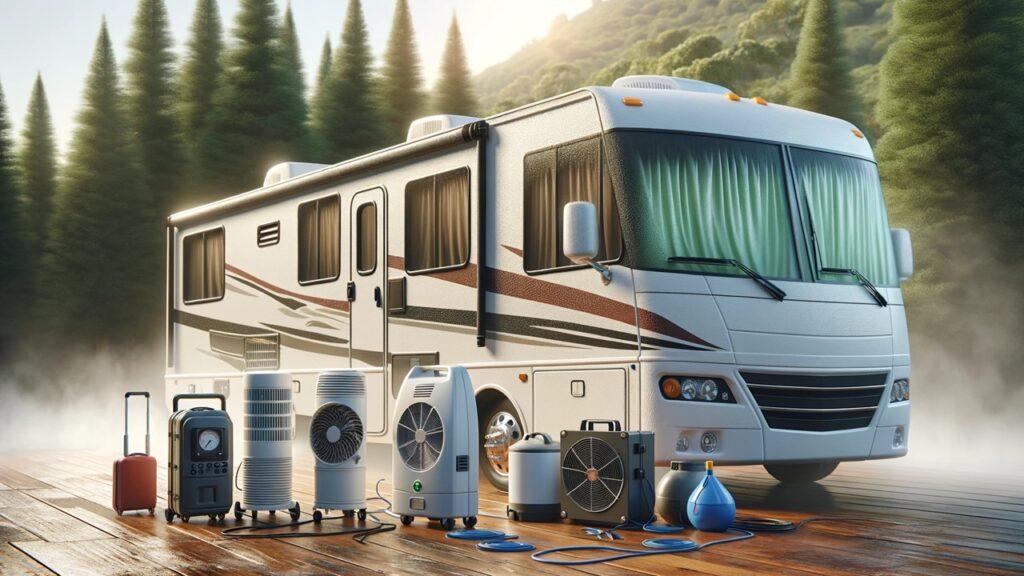
When it comes to enjoying your RV in all types of weather, proper insulation is the key to comfort. Whether you’re braving the chill of winter or soaking up summer rays, insulation ensures your mobile haven is always welcoming. This article on rv insulation techniques for all season comfort dives deep into various insulation techniques that can help you maintain an ideal temperature inside your RV year-round.
What is RV Insulation and Why is it Necessary?
Insulation in an RV isn’t just about staying warm. It’s a crucial component that helps regulate the interior temperature during both hot and cold seasons, making your travels comfortable regardless of the outside weather. By properly insulating your RV, you’ll not only enhance comfort but also improve energy efficiency by reducing the need for heating and cooling. This can lead to significant savings on energy costs and help maintain your RV’s interior mechanisms by preventing moisture build-up and mold.
Furthermore, insulation plays a pivotal role in sound dampening, making your journey quieter and more peaceful. This aspect is particularly beneficial when parked in bustling RV parks or noisy campgrounds. Moreover, if you’ve ever faced issues like frozen pipes in the winter, you’ll appreciate how essential good insulation is for preventing such problems, ensuring your RV remains operational in various climatic conditions.
How to Choose the Right Insulation for Your RV
Choosing the right insulation for your RV involves understanding the materials available and how they fit into your travel lifestyle. Factors such as R-values, which measure an insulation material’s resistance to heat flow, are critical in this decision. Higher R-values indicate better insulative properties.
Let’s explore the most common types of insulation:
- Fiberglass: Widely used due to its cost-effectiveness and good thermal resistance, it’s suitable for areas within the RV that don’t require heavy-duty insulation.
- Foam Insulation: Available in rigid foam boards and spray foam, this type offers excellent heat resistance and is perfect for sealing gaps and crevices throughout your RV.
- Reflective Insulation: Best for extremely sunny climates, this type reflects radiant heat away from your RV, keeping it cooler during hot weather.
In addition to these materials, consider the environmental impact of each option. Sustainable choices such as cotton or wool batt insulation are becoming more popular among eco-conscious RVers. Also, factor in the installation process; some materials may require professional installation, while others, like spray foam, can be a viable option for a DIY camper build.
Lastly, consider any additional RV modifications that might complement your insulation, such as installing RV solar generators or upgrading to RV quiet air conditioners, which can enhance the overall energy efficiency and comfort of your RV living space.
Step-by-Step Guide to Insulating Your RV
To prepare your RV for a comfortable year-round adventure, you need to do more than just pack the right gear. You must insulate your vehicle well against the elements. Whether you’re facing the blistering heat of the desert or the frosty chill of mountain campsites, proper insulation can make all the difference.
Preparing your RV for insulation is the crucial first step. Start by thoroughly cleaning the areas you’ll be insulating, ensuring they are free of dirt and moisture. Remove any old insulation that’s damaged or ineffective, checking for signs of mold or wear. It’s also a great time to consider installing RV solar generators to complement your insulation efforts, enhancing energy efficiency.
Installing insulation involves choosing the right type for each part of your RV. For walls and ceilings, fiberglass or foam boards are popular due to their high R-values and ease of installation. In tighter spaces, such as around plumbing or wiring, spray foam can be particularly effective as it expands to fill gaps, providing an excellent barrier against heat loss and external noise.
In hard-to-reach areas, like corners and edges, spray foam again proves invaluable. Its ability to expand fills these tricky spaces where traditional batts might not provide complete coverage. For the DIYer, ensuring these areas are well-sealed can prevent energy leaks and increase overall comfort.
Moreover, while insulating, consider the integration of RV portable air conditioners and RV quiet air conditioners, especially if your travels take you to warmer climates. This approach ensures your living space remains cool and serene, no matter the external conditions.
Insulating RV Windows and Doors for Enhanced Comfort
The significance of insulating your RV’s windows and doors are very important. These areas are often the primary culprits in heat gain and loss, which can undermine the efficiency of your RV’s heating and cooling systems.
For windows, using reflective insulation or double-layered curtains can deflect sunlight and retain interior temperatures. RV window seals should be checked and replaced if they show signs of cracking or wear. For doors, weatherstripping is essential; it blocks drafts and helps maintain a consistent temperature inside your RV.
DIY tips for enhancing your RV’s insulation include adding thermal blackout curtains or installing a layer of bubble wrap between the glass and curtains during extreme temperatures. These simple additions can significantly improve your comfort without requiring a major overhaul of your RV’s structure.
Furthermore, the installation of RV awnings can reduce heat absorption by shading your RV’s sides and windows, thereby supporting your insulation efforts and reducing the load on your air conditioning system.
Role of Ventilation in Insulated RVs
Proper ventilation is pivotal in maintaining an optimal climate within your RV, especially when it’s well-insulated. Effective ventilation systems help in managing humidity levels, preventing condensation, and ensuring a steady supply of fresh air, which is crucial for both comfort and health.
Methods to ensure adequate airflow include using roof vents, which can be equipped with fans to enhance air circulation. Strategic use of window vents can also assist in creating a cross breeze that promotes a natural cooling effect.
Additionally, while considering insulation, it’s vital not to overlook the need for RV propane tankless water heaters or RV dehumidifiers, which can play roles in temperature control and moisture reduction. These devices help in maintaining a comfortable humidity level, complementing your insulation and ventilation efforts.
By carefully balancing insulation and ventilation, you ensure your RV remains a haven of comfort, no matter where your travels take you or what season it is. This combination not only improves the livability of your RV but also extends its lifespan by protecting against structural dampness and mold growth.
RV Insulation Techniques for Different Climates
When embarking on an RV adventure, properly insulating your living space is essential for your comfort, as it significantly affects how well you withstand varying climatic conditions. Tailoring your RV’s insulation to suit both hot and cold climates ensures that whether you’re driving through the scorching deserts or chilly highlands, the interior temperature remains pleasant and livable.
Tailoring insulation methods for hot and cold climates involves selecting materials that suit extreme conditions. For hot climates, reflective insulation is ideal as it deflects sunlight and reduces heat gain, keeping the RV cooler. Installing RV awnings and using RV solar generators can further assist in managing temperatures by providing shade and sustainable power for air conditioning systems. In cold climates, thicker, high R-value materials like spray foam or fiberglass are preferable as they trap heat inside, making your vehicle a cozy refuge from the cold.
Special considerations for humid or dry environments also impact insulation choices. In humid areas, it is crucial to use moisture-resistant insulation materials that prevent mold and mildew growth, such as closed-cell foam. This type of insulation helps in maintaining the integrity of your RV’s structure and air quality. In dry environments, it’s important to focus on materials that prevent dust ingress and maintain internal humidity levels to avoid dry air that can irritate the skin and respiratory system.
Moreover, integrating RV dehumidifiers or RV air conditioners with heating and cooling can greatly enhance comfort by managing the internal climate according to external conditions.
Pros and Cons of Popular RV Insulation Materials
Choosing the right insulation material for your RV is not just a matter of temperature control but also involves considering the lifespan, cost, and performance of the materials used. Each type has its own set of advantages and disadvantages, which can significantly affect your RV living experience.
Fiberglass insulation is widely favorable for its affordability and effective thermal resistance. It’s relatively easy to install and provides good sound dampening. However, fiberglass can absorb moisture and lose insulative properties if not properly sealed, making it less ideal for humid environments.
Foam insulation comes in two main types: spray foam and rigid foam boards. Spray foam offers excellent coverage, expanding into nooks and crannies to create a tight seal that improves both insulation and air tightness. Rigid foam boards are great for flat surfaces and can be cut to fit various spaces. Both types have higher R-values than fiberglass but tend to be more expensive and require careful installation to avoid gaps.
Reflective insulation is best for very sunny, hot climates as it reflects heat away from the RV. It’s lightweight and easy to install but is generally more effective in preventing heat gain rather than retaining heat, making it less versatile across diverse climates.
Furthermore, considering the cost and lifespan of these materials is crucial. Spray foam, while initially more costly, can offer long-term savings due to its durability and superior insulative properties. Fiberglass, though cheaper upfront, may need to be replaced more frequently if exposed to moisture or pests.
Additionally, integrating systems like RV solar panels or upgrading to RV quiet air conditioners can complement your insulation efforts, making your RV not only more comfortable but also more energy-efficient. This careful consideration ensures that your RV remains a home away from home, no matter where you go.
Maintenance Tips for Your RV’s Insulation
Maintaining the insulation in your RV is crucial for ensuring that it remains a comfortable sanctuary regardless of the weather outside. Regular maintenance not only prolongs the life of your insulation but also enhances your RV’s overall energy efficiency and comfort.
Routine checks and maintenance tips involve inspecting your insulation at least twice a year. Look for any signs of damage, such as moisture accumulation, mold growth, or physical degradation of insulation materials. Check RV solar generators and other installations as well to ensure they have not compromised the insulation integrity. Ensure you seal any breaches or gaps promptly to prevent energy loss.
Signs of insulation wear include noticeable changes in your RV’s internal climate control, higher energy bills, or the presence of drafts and cold spots. To address these issues, replace or repair any damaged sections of insulation, paying extra attention to frequent problem areas like windows and doors. Upgrading worn seals and adding additional layers of insulation can also help restore efficiency.
Moreover, you might consider enhancing your insulation with RV window awnings or using RV heated water hoses during colder months to prevent freezing problems that can affect your vehicle’s plumbing system.
Wrapping It Up!
Throughout this article, we’ve explored a variety of insulation techniques and materials suited for different climates, along with practical tips for maintenance and signs to watch for wear and tear. Effective insulation is key to not just comfort but also the efficiency and longevity of your RV.
Final thoughts on the impact of proper insulation include reduced energy costs, improved comfort during both hot and cold seasons, and a quieter, more peaceful living environment. Remember, a well-insulated RV is more than just a vehicle; it’s your home on wheels. Ensuring your adventures are as enjoyable as possible, no matter where you park, means ensuring it is properly insulated.
Related FAQs
How Often Should RV Insulation Be Replaced?
Insulation should be checked annually and replaced as needed based on wear and environmental factors.
Can Insulation Increase My RV’s Resale Value?
Yes, high-quality insulation can increase an RV’s resale value by improving its energy efficiency and comfort.
What Is The Best Insulation For RV Noise Reduction?
Spray foam insulation is highly effective for reducing noise due to its dense and comprehensive coverage.
How Do I Insulate My RV For Winter Living?
Use high R-value materials like spray foam and ensure all gaps and leaks are sealed to keep heat in.
Does Reflective Insulation Really Work In Hot Climates?
Yes, reflective insulation can significantly reduce heat gain by reflecting the sun’s rays away from your RV.

Jack Rivers is a long-time RVer, a husband, and a dad who’s traveled solo and now with his family. He’s learned a lot from years on the road, sometimes the hard way. From quiet mornings parked by the woods to messy evenings with the kids and a busted heater, he’s been through it all. Miles writes to share the real stuff, the small wins, and the lessons that make RV life worth it, no matter who you’re traveling with.







